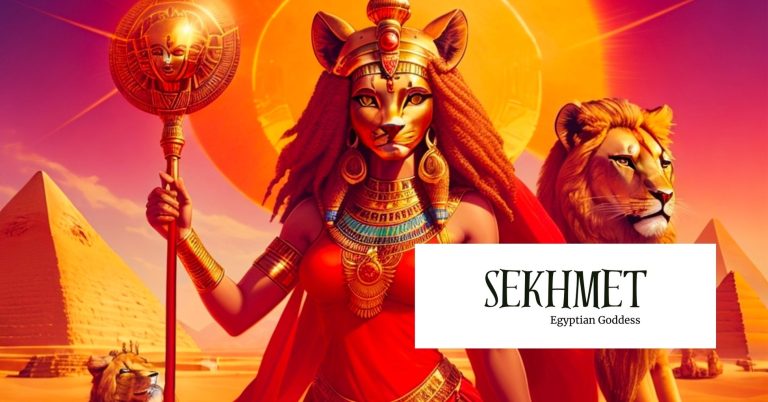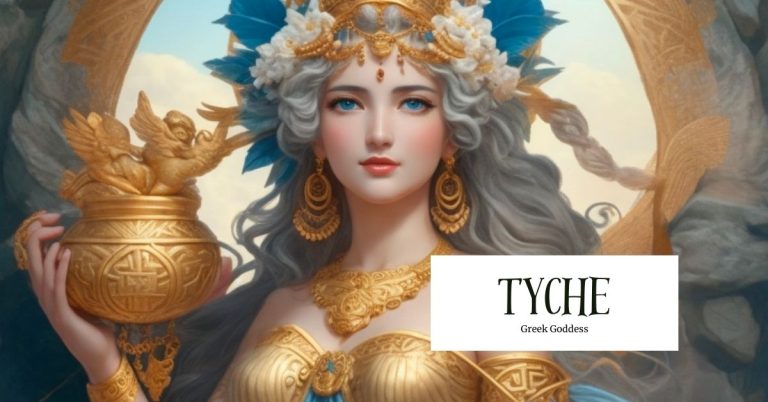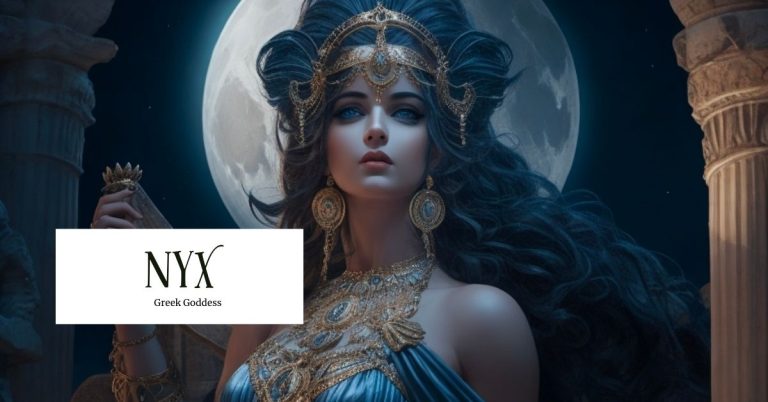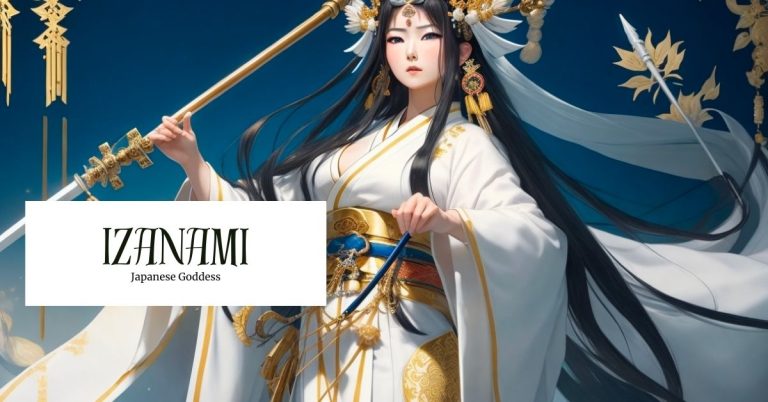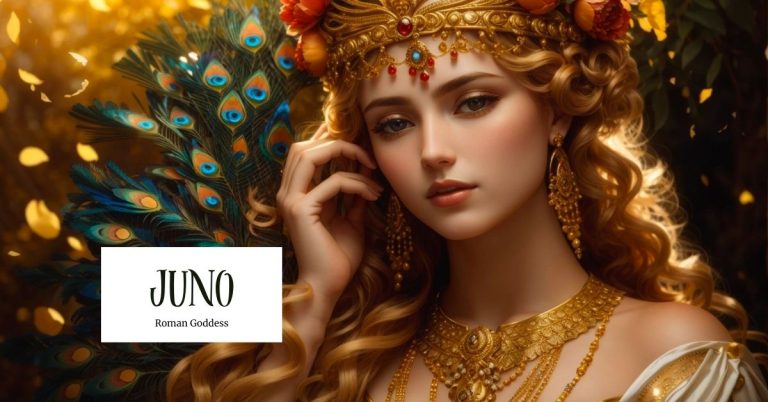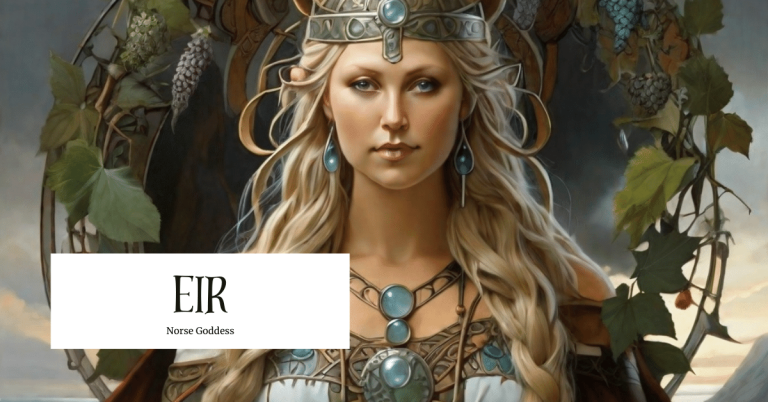Fulia: Goddess of Abundance and Service
The Norse pantheon is a complex and intricate system of deities, each with unique roles and significance. One such divine being is Fulia, the goddess of abundance and service, who plays an essential role in Norse mythology. Despite being often overshadowed by more prominent figures such as Freya, Hel, and Frigg, Fulia possesses fascinating attributes and a rich mythology that adds depth to the Norse pantheon.
Overview of Fulia
Fulia is the devoted handmaiden of the goddess Frigg, and she serves as her confidante and assistant. Highly regarded for her loyalty and unwavering commitment to her duties, Fulia symbolizes generosity and kindness, and her influence permeates all aspects of life, from the home to the workplace. The Old Norse name Fulla translates to ‘bountiful’ or “abundant” (“Fulla”) and adequately reflects her presence, which brings good fortune and prosperity to those who honor her.
Source: Pinterest
Titles
- Goddess of Abundance
- Handmaiden of Frgg
- Keeper of Secrets
Abilities
Fulla’s role as Frigg‘s handmaiden and confidante is integral to her abilities, specifically designed to safeguard and protect the secrets of the Aesir. Her most prominent skill lies in her capacity to act as the ultimate custodian of their confidential matters and to provide a reassuring bulwark against the divulgence of sacred information (Marius). This unique ability highlights Fulla’s unwavering loyalty and unyielding devotion to her mistress, Frigg.
In a world where trust and discretion were highly prized qualities, Fulla exemplifies these virtues through her ability to maintain the sanctity of divine secrets, thereby preserving the harmony and stability of the Norse pantheon. Her role as a confidante and protector of the Aesir’s secrets is crucial to maintaining order and balance in the universe.
Characteristics
In Norse mythology, Fulla is often illustrated as having long, flowing hair and wearing a headdress that conceals her hair, symbolizing her status as Frigg’s handmaiden (“Goddess Fulla”). Fulla’s graceful and elegant demeanor mirrors her position as a trusted companion and confidante of Frigg. Her quiet and reserved nature is a testament to her steadfast devotion to Frigg, which is characterized by humility and reverence (solsdottir).
Moreover, Fulla’s association with Frigg has also led her to be associated with fertility and abundance. In some instances, she is depicted as a goddess of prosperity and wealth, with the ability to grant blessings of abundance and prosperity to those who seek her favor.
Source: Pinterest
Traits
Fulla is a goddess known for her unparalleled loyalty, discretion, and integrity, which she devoted to serving her mistress, Frigg. Her primary role is safeguarding Frigg’s secrets (“Fulla”) and maintaining her privacy at all costs. In a world where knowledge and information were essential to maintaining power and status, Fulla plays a crucial role in preserving the delicate balance of power among the gods and goddesses. Fulla’s role as a trustworthy custodian ensured that Frigg’s secrets remained safe from prying eyes and ears, and her reputation as a reliable and discreet assistant was unmatched.
Symbols
Within Norse mythology, Fulla is a significant figure associated with several symbols that convey her importance. One of the most prominent symbols linked to her is the hood or headdress she is often depicted wearing. This headdress, which effectively conceals her hair, is an emblem of her role as Frigg’s handmaiden and guardian of secrets (Marius). The elegant and enigmatic design of the headdress hints at the mysteries Fulla protects and the sacred trust placed in her. It is a symbol of her loyalty and dedication to her duties.
Another symbol often associated with Fulla is the cornucopia, also known as the horn of plenty. This symbolizes abundance and plenty, reflecting her name’s interpretation as “bountiful” (solsdottir). It serves as a reminder of Fulla’s role in bestowing wealth and prosperity upon those she favors. Fulla’s generosity is highly valued within Norse mythology, and this symbol is a testament to her power and influence.
Source: Pinterest
Festivals and Rituals
While Norse mythology is less extensively documented in terms of festivals and rituals than some other ancient belief systems, evidence suggests that Fulla may have been honored in various ways by the ancient Norse people. These celebrations likely centered on themes of abundance, wealth, and the protection of secrets. One possible festival associated with Fulla is a celebration of harvest and abundance. Food and agricultural products could have been offered to invoke her blessings for a bountiful harvest, ensuring prosperity for the community (“Fulla”).
Moreover, Fulla’s role as the guardian of divine secrets suggests that rituals dedicated to maintaining trust and loyalty within the community may have been performed. These ceremonies would have emphasized the importance of discretion and integrity, which Fulla exemplifies (solsdottir).
Source: Pinterest
Legends associated with Fulia
Fulia, also known as Fulla, is a Norse goddess with a fascinating mythology that reveals her unique attributes and significance within the pantheon. In this section, we will explore the legends associated with Fulia
Origin story
The Norse deity Fulia has a fascinating origin story that is less well-documented than some of her counterparts. However, her close association with Frigg, the queen of the Aesir, provides some insight into her possible origins. According to Norse mythology, Fulia is considered to be the sister of Frigg or even an aspect of her (“Fulla”). This connection suggests that Fulia may have emerged from the same divine essence as Frigg herself, making her a vital aspect of the goddess of the sky and motherhood.
It is important to note that while Fulia’s origin story is less well-known, her association with Frigg suggests that she is a significant figure in Norse mythology. Fulia’s close connection with Frigg, often associated with fertility, childbirth, and motherhood, suggests that she may have been a goddess of fertility and motherhood. It is possible that Fulia’s role as the sister or aspect of Frigg was to assist her in her duties as the goddess of the sky and motherhood.
Furthermore, it is interesting to note that the concept of an aspect or sister deity was not uncommon in Norse mythology. Many of the gods and goddesses had multiple aspects or were considered to be siblings of other deities. This suggests that the Norse gods and goddesses were fluid and multifaceted, with different aspects and roles depending on the situation.
Source: Pinterest
The Compassionate Goddess: Fulia and the Stolen Golden Hair
One of the most intriguing legends associated with Fulia involves her critical role in the story of the stolen golden hair. This legend tells of the mischievous god Loki, known for his cunning and trickery, who decided to play a prank on the goddess Sif, renowned for her beautiful golden hair. Loki cut off Sif’s prized locks in a fit of mischief, causing her great distress (“Fulla”). Thankfully, Fulia, a goddess of abundance and service, came to the rescue. She offered her radiant hair to replace Sif’s stolen tresses, restoring the goddess’s beauty and confidence. This act of generosity and selflessness cemented Fulia’s reputation as a goddess of service and abundance, willing to sacrifice her attributes to aid others in their time of need.
It is fascinating to note that the legend of Fulia’s role in the story of the stolen golden hair highlights her compassion and willingness to help others, even at high personal cost. This aligns with her reputation as a goddess of abundance and service who is always ready to lend a hand to those in need.
Source: Pinterest
The Faithful Guardian of Divine Secrets
In Norse mythology, Fulia is a prominent figure known for her role as the guardian of secrets. One of the most notable legends that showcases Fulia’s importance centers around her association with the goddess Frigg.
According to legend, Frigg once found herself in a precarious situation where her secrets were at risk of being revealed (Marius). Knowing the value of her confidences, Frigg turned to her loyal handmaiden, Fulia.
Fulia, true to her role, ensured that Frigg’s most intimate matters remained hidden from prying eyes. This legend underscores the unbreakable trust between Frigg and Fulia, highlighting the latter’s role as a faithful companion and protector of divine secrets.
Source: Pinterest
Influences of other religions/cultures on Fulia
The influence of other religions and cultures on Norse mythology is a complex and multifaceted topic that scholars have widely debated. While Norse mythology is often viewed as a distinct belief system, it did share some similarities and exchanges with neighboring cultures, such as the Germanic and Celtic cultures. These exchanges included the adoption of specific deities and the incorporation of their stories into Norse mythology. However, it is essential to note that the Norse worldview was unique, and the Norse gods and goddesses were not simply borrowed from other cultures but rather evolved from the specific beliefs and practices of the Norse people.
One of the most compelling examples of a Norse goddess is Fulia, who appears to be primarily rooted in Norse tradition, with limited evidence of direct influences from other religions or cultures. Fulia was a goddess of abundance and service, and her role aligns with the broader Norse worldview, where the forces of nature and the elements played a significant role in shaping the beliefs and practices of the Norse people. She was often depicted carrying a horn of plenty, symbolizing the abundance and prosperity she could bestow upon her worshippers.
In conclusion, while Norse mythology did have some exchanges with other cultures, it was ultimately a unique and distinct belief system that evolved from the specific worldview of the Norse people. Fulia’s character is an excellent example of a Norse goddess who embodies the values and beliefs of this unique culture.
Modern appearances
Norse mythology has made a resurgence in modern times, leading to various appearances and depictions of Norse deities. One of these lesser-known goddesses is Fulia, who still finds her place in modern culture in various ways. Video games, literature, and popular culture have adapted the rich Norse pantheon, offering new interpretations of these ancient deities, including Fulia. Additionally, Neopagan and Heathen communities honor or invoke Fulia, a goddess of abundance and service, in their spiritual practices. Artists and artisans have also been inspired by Norse mythology, creating unique representations of deities like Fulia in various forms, from paintings and sculptures to jewelry and clothing.
Source: Pinterest
Final thoughts
In conclusion, it is clear that Fulia, also known as Fulla, holds a significant place in Norse mythology as the goddess of abundance and service. Her unwavering loyalty, selflessness, and role as a faithful companion to Frigg and guardian of divine secrets make her an influential figure among the Aesir. While her origins remain unclear, her enduring importance is evident in her portrayal in various forms of media and spiritual practices. Fulia’s legacy serves as a reminder of the relevance of ancient deities in contemporary culture and the enduring values of trust, loyalty, and discretion highly esteemed in the Norse world.
References
“Fulla.” Berloga-Workshop.com, berloga-workshop.com/blog/87-fulla.html. Accessed 21 Sept. 2023.
“Fulla.” Wikipedia, 14 Aug. 2023, en.wikipedia.org/wiki/Fulla. Accessed 21 Sept. 2023.
“Goddess Fulla.” Journeying to the Goddess, 28 Jan. 2012, journeyingtothegoddess.wordpress.com/2012/01/28/goddess-fulla/. Accessed 21 Sept. 2023.
Marius. “Fulla | Goddess of Abundance and Frigg’s Loyal Handmaiden.” Norse Mythology & Viking History, 21 Apr. 2023, vikingr.org/norse-gods-goddesses/fulla. Accessed 21 Sept. 2023.
solsdottir. “Fulla: Goddess of Secrets.” We Are Star Stuff, 6 June 2019, earthandstarryheaven.com/2019/06/06/fulla/. Accessed 21 Sept. 2023.


